
Sisattanak: A Blend of Tranquility and Tradition in Vientiane
Discover Sisattanak in Vientiane: A harmonious blend of cultural heritage, serene temples, local markets, and lush green spaces for a tranquil escape.
Sisattanak, located in the heart of Vientiane, Laos, is a serene neighborhood that offers a perfect blend of cultural heritage and modern living. This area is known for its lush greenery, peaceful streets, and a strong sense of community, making it an ideal destination for tourists seeking a tranquil escape from the bustling city life. One of the main attractions in Sisattanak is the Wat Si Muang, a revered Buddhist temple that attracts both locals and tourists. The temple is not only a place of worship but also a site of historical significance, offering a glimpse into the rich cultural tapestry of Laos. Visitors can participate in traditional ceremonies, explore the intricate architecture, and enjoy the serene ambiance of the temple grounds. In addition to its cultural landmarks, Sisattanak is home to several charming cafes, boutique shops, and local markets. The neighborhood's vibrant streets are perfect for leisurely strolls, where you can discover unique handicrafts, sample delicious Lao cuisine, and interact with friendly locals. The Mekong River, which borders the neighborhood, provides a picturesque backdrop for evening walks and offers stunning sunset views. Sisattanak is also known for its green spaces and parks, providing ample opportunities for outdoor activities. Whether you're interested in exploring nature trails, enjoying a picnic, or simply relaxing in a peaceful environment, this neighborhood has something for everyone. With its blend of tradition, modernity, and natural beauty, Sisattanak is a must-visit destination for any traveler exploring Vientiane.
Local tips in Sisattanak
- Visit Wat Si Muang early in the morning to avoid crowds and experience the temple's tranquil atmosphere.
- Try the local street food at the nearby markets for an authentic taste of Lao cuisine.
- Take a leisurely walk along the Mekong River in the evening for stunning sunset views.
- Bring comfortable walking shoes as the neighborhood is best explored on foot.
- Keep some cash handy as many small shops and vendors do not accept credit cards.
Sisattanak: A Blend of Tranquility and Tradition in Vientiane
Sisattanak, located in the heart of Vientiane, Laos, is a serene neighborhood that offers a perfect blend of cultural heritage and modern living. This area is known for its lush greenery, peaceful streets, and a strong sense of community, making it an ideal destination for tourists seeking a tranquil escape from the bustling city life. One of the main attractions in Sisattanak is the Wat Si Muang, a revered Buddhist temple that attracts both locals and tourists. The temple is not only a place of worship but also a site of historical significance, offering a glimpse into the rich cultural tapestry of Laos. Visitors can participate in traditional ceremonies, explore the intricate architecture, and enjoy the serene ambiance of the temple grounds. In addition to its cultural landmarks, Sisattanak is home to several charming cafes, boutique shops, and local markets. The neighborhood's vibrant streets are perfect for leisurely strolls, where you can discover unique handicrafts, sample delicious Lao cuisine, and interact with friendly locals. The Mekong River, which borders the neighborhood, provides a picturesque backdrop for evening walks and offers stunning sunset views. Sisattanak is also known for its green spaces and parks, providing ample opportunities for outdoor activities. Whether you're interested in exploring nature trails, enjoying a picnic, or simply relaxing in a peaceful environment, this neighborhood has something for everyone. With its blend of tradition, modernity, and natural beauty, Sisattanak is a must-visit destination for any traveler exploring Vientiane.
Iconic landmarks you can’t miss
Patuxay - Victory Monument
Discover Patuxay, Vientiane's iconic Victory Monument, a stunning blend of history, architecture, and local culture in Laos.

Chao Anouvong Park
Discover tranquility at Chao Anouvong Park, a scenic riverside retreat in Vientiane blending natural beauty with rich cultural heritage.

Wat Si Muang
Discover the spiritual heart of Vientiane at Wat Si Muang, a breathtaking Buddhist temple rich in culture and artistry.

Wat Sisaket
Explore the tranquil beauty of Wat Sisaket, Vientiane's oldest temple, home to thousands of Buddha images and rich cultural heritage.

Ho Phrakeo Museum
Explore Laos' cultural heritage at Ho Phrakeo Museum, where art, history, and spirituality beautifully converge in the heart of Vientiane.

That Dam Stupa
Experience the rich history and spiritual ambiance of That Dam Stupa in Vientiane, a must-visit landmark embodying Laos' cultural heritage.

Patuxay Park
Explore Patuxay Park, Vientiane's iconic landmark, where history, culture, and stunning views come together in a vibrant natural setting.

King Anouvong Statue
Explore the King Anouvong Statue in Vientiane, a majestic tribute to Laotian heritage surrounded by the stunning Mekong River.

King Sisavangvong Statue
Discover the King Sisavangvong Statue in Vientiane, a historical landmark celebrating Laotian culture, rich heritage, and regal history.
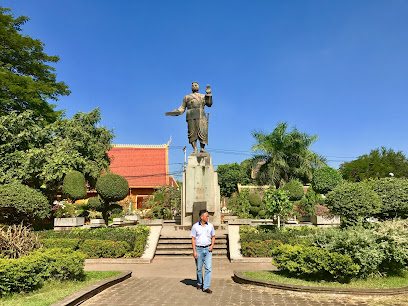
ຫໍຫຼັກເມືອງ
Explore the rich cultural heritage and stunning architecture of Vientiane's historical landmark, a must-visit for every traveler in Laos.

Unmissable attractions to see
Patuxay - Victory Monument
Discover Patuxay, Vientiane's stunning Victory Monument, where Laotian heritage meets colonial charm in a breathtaking setting.

Pha That Luang Vientiane
Discover the grandeur of Pha That Luang, a sacred golden stupa and the national symbol of Laos, nestled in Vientiane's heart.

Patuxay Park
Explore Patuxay Park in Vientiane: A captivating blend of history, culture, and natural beauty in Laos' vibrant capital.

Hadsaiykhao Lake
Explore the serene beauty of Hadsaiykhao Lake in Vientiane, a tranquil escape perfect for relaxation and stunning photography.

Essential places to dine
Kualao Restaurant
Experience authentic Laotian flavors at Kualao Restaurant in Vientiane – where fine dining meets cultural heritage.
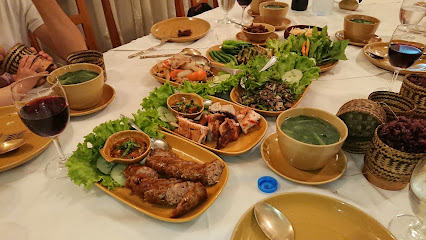
The Italian Job
Experience the taste of Italy in Vientiane at The Italian Job - where every dish is a celebration of authentic flavors.

Pimenton Restaurant Vientiane
Experience the exquisite flavors of tapas at Pimenton Restaurant in Vientiane – where culinary art meets warm hospitality.

Romantic City Restaurant
Experience authentic Laotian cuisine in a cozy atmosphere at Romantic City Restaurant in Vientiane.

Arirang Restaurant
Discover the rich flavors of Korea at Arirang Restaurant in Vientiane - where authentic cuisine meets a cozy atmosphere.

Home Vientiane
Discover Home Vientiane: A serene dining experience with delicious food in a beautiful garden setting perfect for families and digital nomads.

Swan Restaurant
Experience exquisite Western cuisine at Swan Restaurant in Vientiane - where every dish tells a story of flavor and tradition.
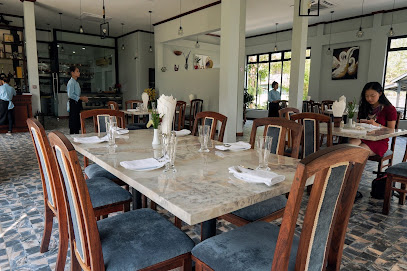
TOM 66
Savor classic American diner cuisine at TOM 66 in Vientiane—where delicious meals meet nostalgic vibes.

La Gondola Italian Restaurant
Discover authentic Italian cuisine at La Gondola Restaurant in Vientiane – where flavors meet elegance in every dish.

Labieng Restaurant
Experience authentic Laotian cuisine at Labieng Restaurant in Vientiane - a culinary journey through Laos' rich flavors awaits.
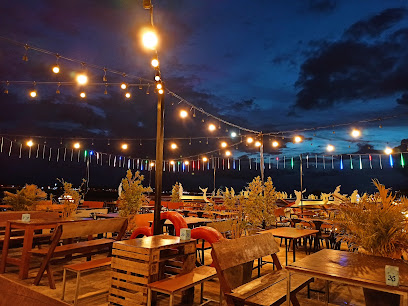
Markets, malls and hidden boutiques
HERWORKS Vientiane Flagship Store
Explore the charm of Laos through unique souvenirs at HERWORKS Vientiane Flagship Store, your gateway to authentic local craftsmanship.

T'Shop Lai Gallery
Explore unique home goods and Laotian handicrafts at T'Shop Lai Gallery, the heart of Vientiane's artistic shopping scene.

LaoWay market
Experience authentic Lao culture at LaoWay Market, a vibrant shopping destination in Vientiane filled with local delicacies and unique handicrafts.
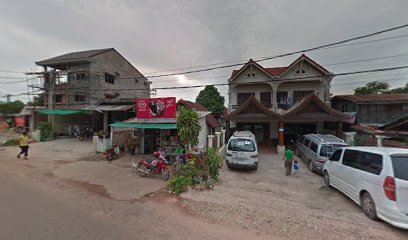
Lao King tree
Explore authentic Lao crafts at Lao King Tree, a charming gift shop in Vientiane, where culture meets creativity in every unique piece.

XONPHAO SHOP
Explore the essence of Laos at XONPHAO SHOP, where unique gifts and local craftsmanship await every traveler.
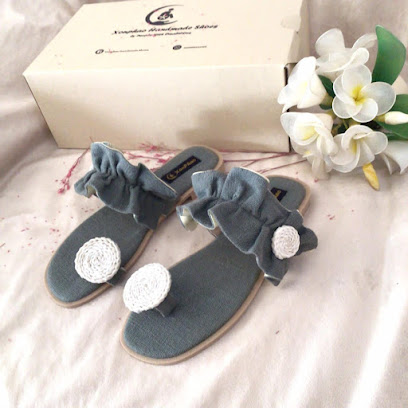
A2Z Shop Vientiane
Explore A2Z Shop Vientiane for a delightful selection of toys and household goods, perfect for families and souvenir hunters.

Kataiy Laos
Discover unique gifts and traditional handicrafts at Kataiy Laos, Vientiane's charming shop showcasing the artistry of local artisans.

Salikoun's Lao Buddha Amulets and Medallions
Explore the spiritual charm of Laos at Salikoun's Lao Buddha Amulets and Medallions, a treasure trove of antique amulets and medallions steeped in tradition.
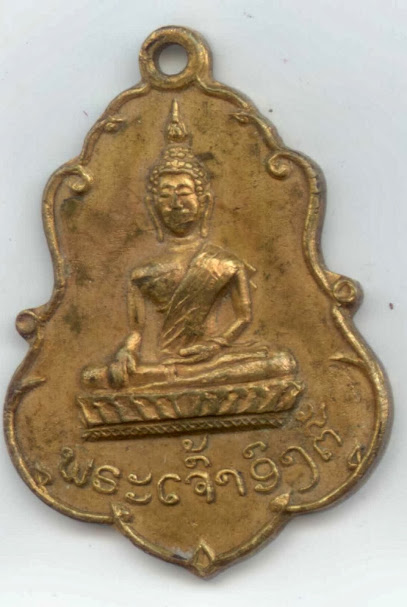
MililiutheCafeCases2
Explore Mililiuthe Cafe Cases, a captivating gift shop in Vientiane offering unique Laotian crafts and souvenirs that embody the spirit of Laos.

Coco Made in Iran
Discover unique handcrafted gifts at Coco Made in Iran, a charming gift shop in Vientiane showcasing the artistry and culture of Laos.

Essential bars & hidden hideouts
Chokdee Café Belgian Beer Bar
Experience authentic Belgian cuisine and an extensive selection of beers at Chokdee Café Belgian Beer Bar in Vientiane, Laos.

Moonlight Lounge
Discover Vientiane's vibrant nightlife at Moonlight Lounge, a perfect blend of bar, hookah lounge, and nightclub with delicious food and drinks.

Tipsy Elephant Vientiane Rooftop Lounge
Experience the breathtaking views and lively atmosphere at Tipsy Elephant Rooftop Lounge, the perfect bar to enjoy cocktails and sunsets in Vientiane.

Samlo
Experience the vibrant nightlife at Samlo, a lively pub in Vientiane offering a mix of local and international drinks in a welcoming atmosphere.

Cocoon Bar Vientiane
Discover the vibrant nightlife of Vientiane at Cocoon Bar, where unique cocktails and a lively atmosphere await every traveler.

Rustic White 90’s Music Bar
Immerse yourself in the nostalgic beats of the 90s at Rustic White 90's Music Bar, Vientiane's vibrant hub for music and fun.

Artisan Vientiane
Discover Artisan Vientiane, a vibrant bar offering a unique selection of drinks and a welcoming atmosphere in the heart of Laos' capital city.

Salanae Bistro & Bar
Discover the vibrant local culture at Salanae Bistro & Bar in Vientiane, where exquisite drinks and a welcoming atmosphere await.

Happy life Snack Bar
Experience the vibrant culture of Vientiane at Happy Life Snack Bar, your go-to destination for delicious snacks and refreshing drinks.

Basik Lounge
Discover the trendy Basik Lounge in Vientiane, where vibrant cocktails and a lively atmosphere create the perfect nightlife experience.
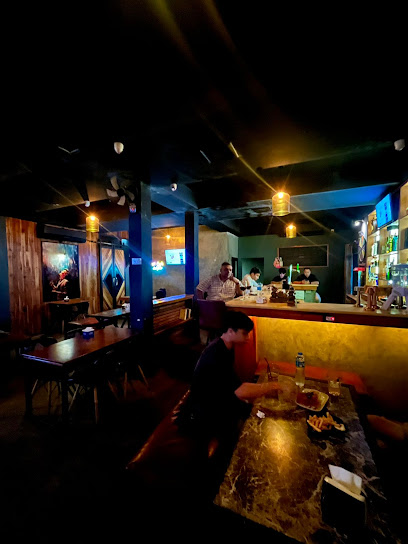
Local Phrases
-
- Helloສະບາຍດີ
[sa baai di] - Goodbyeລາພາກ
[la phak] - Yesຮີ
[hi] - Noຍ້ອຍ
[nyo] - Please/You're welcomeກະລຸນາ
[ka lu na] - Thank youຂອບໃຈ
[khop chai] - Excuse me/Sorryກະລຸນາຕໍ່ຫນ່
[ka lu na to nai] - How are you?ໂດຍເຈົ້າດີບໍ?
[doi jao dai bo] - Fine. And you?ເປັນອາດວິດ. ທ່ານເຈົ້າດີບໍ?
[pen a di wit. than jao dai bo] - Do you speak English?ທ່ານແປເອງເວົ້າບໍ?
[than pae on wao bo] - I don't understandຂ້າພົວເຈັບ
[kha phua jep]
- Helloສະບາຍດີ
-
- I'd like to see the menu, pleaseຂ້ອຍຕ້ອງໃຊ້ເມືອງບໍລິກາ
[khoi tong sai meuang lok] - I don't eat meatຂ້ອຍບໍ່ການອາຫານ
[khoi bo kan ahan] - Cheers!ຂະດູກ
[ka duk] - I would like to pay, pleaseຂ້ອຍຕ້ອງຈ່າຍ
[khoi tong chai]
- I'd like to see the menu, pleaseຂ້ອຍຕ້ອງໃຊ້ເມືອງບໍລິກາ
-
- Help!ຊ່ວຍຊາດ
[sua sat] - Go away!ດາວອອຍ
[daw oi] - Call the Police!ໂທລະພາບ
[to lao phak] - Call a doctor!ໂທລະພາບທ່ານໝັກ
[to lao than mak] - I'm lostຂ້ອຍຊື່ນອນ
[khoi su non] - I'm illຂ້ອຍຈັກເຈັບ
[khoi jak jep]
- Help!ຊ່ວຍຊາດ
-
- I'd like to buy...ຂ້ອຍຕ້ອງຊື້...
[khoi tong su...] - I'm just lookingຂ້ອຍແນ່ນອນ
[khoi nae non] - How much is it?ການກິນເປັນເດືອນ?
[kan kin pen deun] - That's too expensiveນີ້ໂຫລຫ
[ni hola] - Can you lower the price?ທ່ານສາມາດບໍ່?
[than samat bo]
- I'd like to buy...ຂ້ອຍຕ້ອງຊື້...
-
- What time is it?ເວລາແລະເຈົ້າເປີດ?
[welaa lao jeb] - It's one o'clockແລະເປັນເກົ່າ
[lae pen geka] - Half past (10)ເກົ່າມື່ນ
[geka mun] - Morningເຊົ້າ
[sao] - Afternoonສາມີ
[samui] - Eveningເກືອ
[keua] - Yesterdayມື້ວານ
[mun wan] - Todayມື້ນີ້
[mun ni] - Tomorrowມື້ອື້
[mun eu] - 1ໜ້າ
[na] - 2ສອງ
[song] - 3ສາມ
[sam] - 4ສີ່
[si] - 5ຫ້າ
[ha] - 6ໂອຖ
[oat] - 7ແປດ
[faet] - 8ເຈັດ
[jed] - 9ເສັ້ນ
[sen] - 10ສິບ
[sip]
- What time is it?ເວລາແລະເຈົ້າເປີດ?
-
- Where's a/the...?ຢູ່ເທັງກາຍ...?
[yuu ten kaai...?] - What's the address?ທີ່ຢູ່ບ່ອນເມືອງຫນຶ່ງເຂົ້າແຍງ?
[ti yu bon meuang nung ko nai] - Can you show me (on the map)?ທ່ານໄດ້ເດີ້ຂ້ອຍບໍ່?
[than dai deu khoi bo] - When's the next (bus)?ເວ້ວມື່ນມານຸ້ນໄຟ?
[welaa mun manun fai] - A ticket (to ....)ຈຳນວນ...
[jum nuan...]
- Where's a/the...?ຢູ່ເທັງກາຍ...?
History of Sisattanak
-
Sisattanak, one of the central districts of Vientiane, was established during the early 20th century as part of French colonial efforts to modernize Laos. The area became a significant residential and administrative zone, reflecting both traditional Laotian and colonial architectural influences, with wide boulevards and European-style buildings emerging alongside traditional Lao homes.
-
During World War II, Sisattanak experienced the impacts of Japanese occupation. The strategic importance of Vientiane led to significant military activity in the area. Some buildings were repurposed for military use, while the local population faced hardships under the changing regimes, leading to increased resistance movements that would shape the future of Laos.
-
In the late 1940s and early 1950s, Sisattanak became a focal point during the Indochina War. The neighborhood experienced political upheaval as various factions vied for control, and the effects of the conflict were felt in the daily lives of residents. The eventual victory of the Pathet Lao in 1975 marked a significant shift in governance and the establishment of the Lao People's Democratic Republic.
-
Following the end of the war, Sisattanak underwent significant reconstruction and urban development. The government focused on rebuilding infrastructure, including roads, schools, and healthcare facilities, to support the growing population. This period saw the introduction of socialist principles that influenced urban planning and community organization.
-
In recent decades, Sisattanak has embraced modernization while striving to preserve its cultural heritage. The neighborhood is now known for its vibrant markets, temples, and cultural festivals that reflect the rich traditions of Laos. The annual Boun That Luang festival, held at the nearby Pha That Luang, draws thousands of visitors and showcases the neighborhood's cultural significance within Vientiane.
Sisattanak Essentials
-
Sisattanak is located in Vientiane and is easily accessible from other neighbourhoods. To get to Sisattanak from the city center, you can take a tuk-tuk or a local taxi, which are readily available. Public buses also connect various parts of Vientiane, with routes that typically stop near Sisattanak. For those arriving from the Wattay International Airport, a taxi ride to Sisattanak will take around 15-20 minutes, depending on traffic.
-
Sisattanak is a compact neighbourhood, making it easy to explore on foot. For longer distances, tuk-tuks and local taxis are convenient options. There are no trains in Vientiane, but local buses operate within the city and can be used to reach various points of interest. Bicycles are also a popular mode of transport, with several rental shops available throughout the area.
-
Sisattanak is generally a safe neighbourhood for tourists. However, like any urban area, it is wise to remain vigilant. Avoid walking alone at night, especially in poorly lit areas. While there are no specific high-crime zones, petty theft can occur, so keep an eye on your belongings and avoid displaying valuables. It is advisable to stay away from isolated areas after dark.
-
In case of an emergency, dial 119 for police assistance, or 162 for fire emergencies. Medical emergencies can be addressed by visiting the nearest hospital or clinic. It's recommended to have travel insurance that covers medical expenses. For minor ailments, local pharmacies are available to provide over-the-counter medications.
-
Fashion: Do dress modestly, particularly when visiting temples. Avoid shorts and sleeveless tops. Religion: Do be respectful by covering your shoulders and knees when entering religious sites. Public Transport: Do be courteous and offer your seat to elderly or disabled individuals. Don't eat or drink on public transport. Greetings: Do greet locals with a smile and a slight bow of the head. Avoid direct confrontation. Eating & Drinking: Do try local dishes and accept food offerings graciously. Don't refuse hospitality, as it can be seen as offensive.
-
To experience Sisattanak like a local, visit the morning market (Talat Sao) for fresh produce and local delicacies. Engage with local vendors, as many are friendly and eager to share stories about their products. Don’t miss trying traditional Lao dishes at small roadside stalls. Additionally, joining a cooking class can provide deeper insights into Lao culture and cuisine. If you're interested in culture, visit the nearby temples such as Wat Si Saket and That Dam for a glimpse into the local spiritual life.
Nearby Cities to Sisattanak
-
Things To Do in Udon Thani
-
Things To Do in Vang Vieng
-
Things To Do in Loei
-
Things To Do in Phonsavan
-
Things To Do in Xieng Khouang
-
Things To Do in Nan
-
Things To Do in Luang Prabang
-
Things To Do in Thakhek
-
Things To Do in Savannakhet
-
Things To Do in Sukhothai
-
Things To Do in Nakhon Ratchasima
-
Things To Do in Chiang Rai
-
Things To Do in Ubon Ratchathani
-
Things To Do in Muang Sing
-
Things To Do in Chiang Mai









